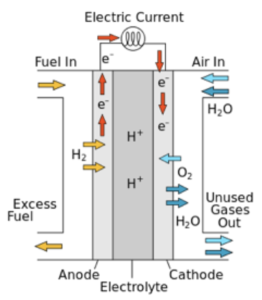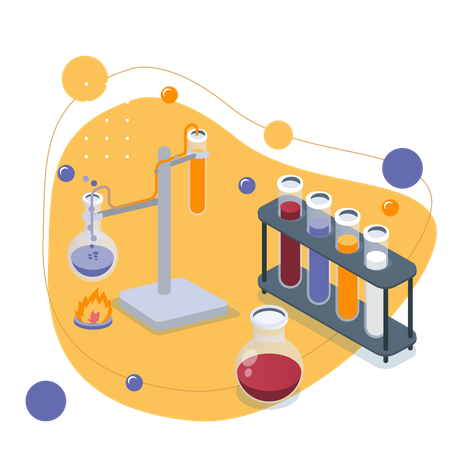Fuel Cells (GCSE Chemistry)
Fuel Cells
Fuel Cells
Cell Supply
- Fuel cells have two main supplies. In order to make electricity, fuel cells will use an external source of fuel and oxygen. The source of fuel could be an element such as hydrogen.
- Fuel is electrochemically oxidised. When fuel enters the cell, it reacts with oxygen. This occurs through an oxidation reaction, resulting in the creation of a potential difference inside the cell.
Hydrogen Fuel Cells
- Hydrogen-oxygen cells are fuel cells. The hydrogen-oxygen fuel cell is an alternative to rechargeable cells and batteries. The electrolyte in the cell is potassium hydroxide. The electrodes are made from a catalyst combined with porous carbon.
- Hydrogen becomes oxidised. When hydrogen is placed in the anode, it becomes oxidised into H+ ions. The H+ ions then flow towards the cathode.
H2 → 2H+ + 2e–
- Oxygen becomes reduced. When oxygen is placed in the cathode, it becomes reduced. Once reduced, it reacts with the hydrogen ions to form water.
O2 + 4H+ + 4e– → 2H2O
- An electric current forms. An electric current is formed by the electrons flowing through an external circuit from the anode to the cathode.
The overall equation of the reaction is:
2H2 + O2 → 2H2O

Evaluating Hydrogen Fuel Cells
- Fuel cells are a green solution. Hydrogen-oxygen fuel cells could be a better replacement to finite fuels, such as crude oil. No carbon dioxide gas is produced during their use, so no greenhouse gas formed. Crude oil supplies are less likely to run out.
- Fewer pollutants are produced. Fuel cells don’t produce many pollutants as finite fuels. Their main products are water and heat.
- Toxic waste can be a problem. Both electrical cars and fuel cells don’t produce many pollutants. However, the batteries of electrical cars can be a source of pollution since they are formed from toxic metal compounds, which are difficult to dispose of later on. The batteries can only be recharged a certain number of times before they need to be replaced.
A fuel cell is a device that generates electricity by using a chemical reaction to convert fuel and oxygen into electricity, heat, and water. It’s like a battery, but instead of being charged up, it’s continually supplied with fuel and air to keep producing electricity.
Fuel cells work by using hydrogen and oxygen to produce an electrical current. The hydrogen is fed into the anode (negative electrode) of the fuel cell and the oxygen is fed into the cathode (positive electrode). The hydrogen atoms are separated into protons and electrons, which flow through the fuel cell to create an electrical current. The protons and electrons then combine with the oxygen at the cathode to form water.
There are several benefits to using fuel cells, including:
They are clean and produce little to no pollution
They are quiet and efficient
They can be used as a backup power source for homes and businesses
They can be used in vehicles to reduce emissions and increase efficiency
There are several different types of fuel cells, including:
Polymer electrolyte membrane fuel cells (PEMFCs)
Alkaline fuel cells (AFCs)
Phosphoric acid fuel cells (PAFCs)
Solid oxide fuel cells (SOFCs)
Molten carbonate fuel cells (MCFCs)
Hydrogen fuel cell technology is used in a variety of applications, including:
Powering vehicles and reducing emissions
Providing backup power for homes and businesses
Powering remote or off-grid locations
Providing clean energy for industrial processes.
A fuel cell is different from a battery in that it doesn’t store energy, it generates energy through a continuous chemical reaction. Batteries store energy and release it when it’s needed. Additionally, fuel cells can produce electricity as long as they are supplied with fuel and air, while batteries will eventually run out of energy and need to be recharged.
Fuel cells are an exciting technology with a lot of potential for the future. As the demand for clean and efficient energy sources continues to grow, it’s likely that fuel cells will play a larger role in meeting that demand. Advances in fuel cell technology, such as the development of more efficient and affordable fuel cells, will also help to drive their growth in the coming years.






Still got a question? Leave a comment
Leave a comment